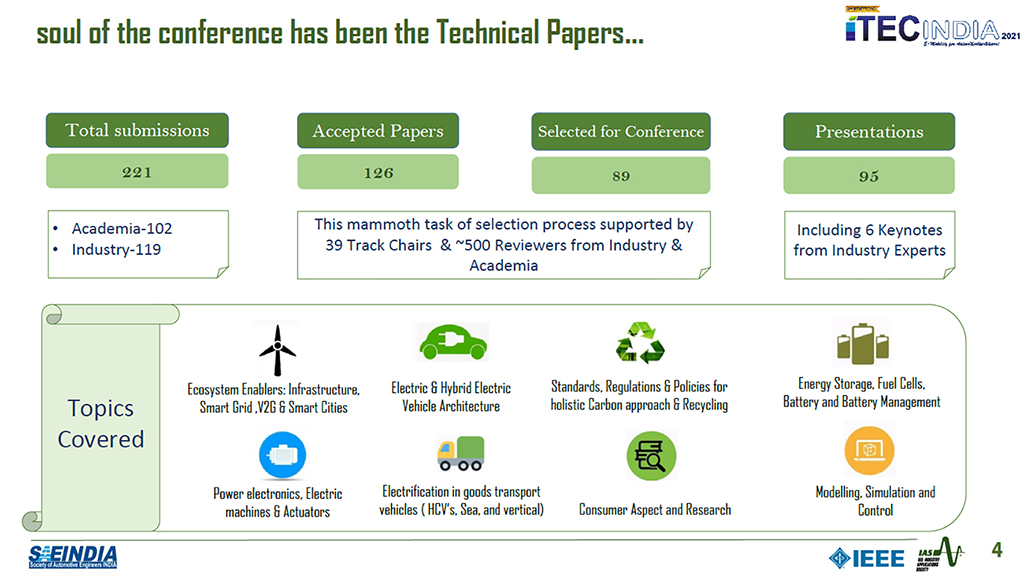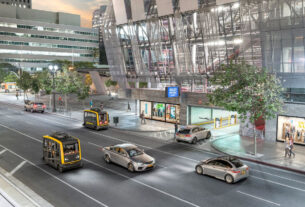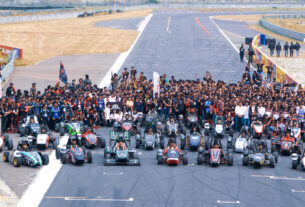SAE India hosted the International Transportation Electrification Conference (ITEC) India 2021 from 16 to 18 December on a virtual platform. The event, the fourth edition of ITEC, was themed ‘e-Mobility for #AatmaNirbharBharat’ and received excellent response from all quarters including participation of 5 Government representatives for the Plenary Sessions, 600+ delegates over the three days and 90+ technical paper presentations.

Addressing the audience during the inaugural session of the event, Dr. Mahendra Nath Pandey, Minister of Heavy Industries said, “India needs to define its path of e-Mobility transformation for sustainable transportation. India can reap the benefits from solar energy while also deciding on how to play a role in the battery ecosystem, from securing raw materials to value addition within India. Hydrogen is also interesting option and offers a promising future transportation energy source.” He further went on to share details about some of the Government’s initiatives towards promoting EVs, through FAME, PLI and PMP schemes.
The first Plenary Session was titled ‘AatmaNirbhar Bharat – India’s Journey Towards Self Reliance on EV Technologies’. The expert panelists discussed a number of interesting issues including ways to attain self-reliance on EV’s and the need for India to focus on talent pool at the grass root level, collaboration with all stakeholders, identifying cost effective cell chemistries, strategic supply chain and bringing innovations in manufacturing.
The Plenary Session 2 on ‘Innovation and Start-up Experience in Transforming Mobility’ brought out some insightful thoughts on the topic. With India being the third largest start-up ecosystem in the world, financial support and hand-holding from the industry would go a long way towards accelerating the innovation process in the country, opined the experts. Serious research in India has started in e-mobility which is reflected in the fact that rather than merely importing and assembling kits, companies are engaged in designing safe & reliable solutions, tailor-made for consumers in the country.

The third Plenary Session was titled ‘Designing Affordable E-Mobility Solutions for Diverse Consumers in the New World, including Multimodal Transport Solutions’. Some of the aspects touched upon included serious research in process innovation for battery manufacturing to bring down cost, potential of 2W & mass mobility (buses) to lead the EV charge, importance of urban planning and financial support by Government for mass transport electrification.
The Plenary Session 4 on ‘Sustainable Mobility: India Centric Approach’ brought out the idea that India is a country with unique challenges and emphasized the need to focus on growth, however in a sustainable manner. The experts were of the opinion that ‘well to wheel’ emissions need to be considered for lowering GHG for which hydrogen and bio fuels hold a lot of promise. Tighter regulations will push proliferation of EVs which can improve local pollution.
The fifth and final Plenary Session focused on ‘Enabling E-Mobility Ecosystem for Faster Adoption’ and covered topics such as requirement for price parity, why subsidies are not sustainable, creating affordable and accessible charging infrastructure and creating consumer awareness to drive EV penetration. The panelists signed off by suggesting that valuable lessons could be learnt from developed countries and adapted based on local conditions for faster EV adoption.






